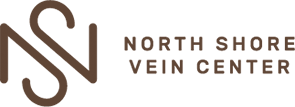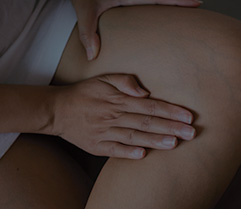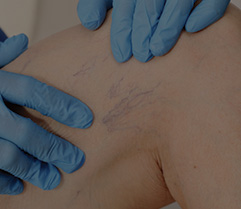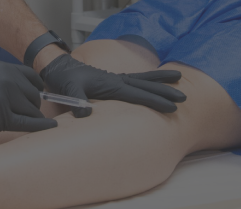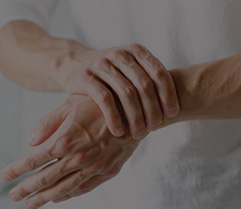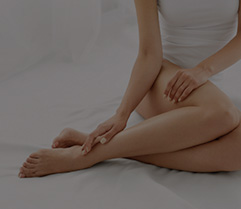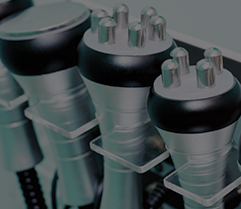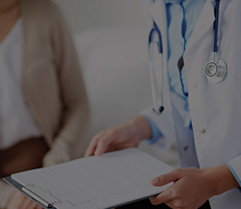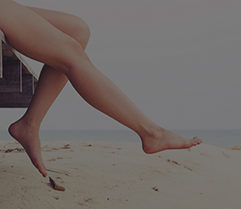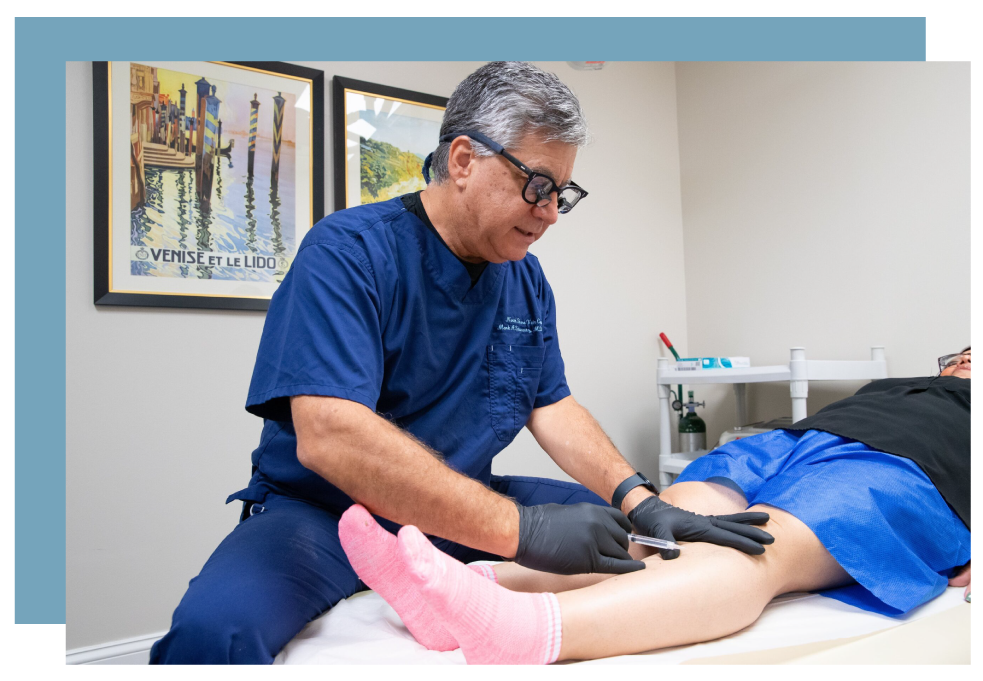
Leg veins can develop when valves in the veins become weakened or damaged—causing blood to pool or flow backward into the veins instead of toward the heart. These veins—known as varicose veins and spider veins— can often be unsightly, and some may even cause symptoms, including itching, burning, pain, and throbbing in the legs.
Mark Schwartz, MD, FACS, RPVI, known in New York as the “Long Island Vein Doctor,” offers several safe and effective treatments for leg veins that can reduce their symptoms and minimize their appearance.
Causes and Risk Factors of Leg Veins
Leg veins may be caused by various factors related to genetics, environment, and/or lifestyle. Risk factors linked to leg veins include:
- Sex. Varicose veins are two times more common in females than in males, and about 50% of females have spider veins.
- Age. Veins in the legs typically weaken with age, which may contribute to vein conditions like spider veins later in life.
- Family history. Those whose relatives have leg veins are also likely to get them.
- Standing or sitting for long periods. These activities can cause leg veins to work harder at sending blood back toward the heart.
- Obesity. Excess weight can often put extra pressure on veins in the legs.
- Pregnancy. Blood flow increases during pregnancy to support the fetus, which may lead to swollen, bulging veins. Weight gain and a growing uterus are other pregnancy-related factors that may contribute to leg veins.
- Hormone therapy. Higher amounts of estrogen may weaken the valves in leg veins, such as that provided by birth control or hormone replacement therapy.
Treatments for Leg Veins
Leg veins can be safely and effectively treated using one of several minimally invasive procedures. The goal of treatment is to reduce symptoms and minimize the appearance of the veins as much as possible.
Results of leg vein treatment are usually long-lasting, if not permanent. Dr. Schwartz can examine leg veins and recommend the best treatment option.
Endovenous Laser Ablation
Endovenous laser ablation destroys unwanted veins using laser energy. During this procedure, a tiny laser fiber is inserted into the vein. The laser fiber is activated to heat the vein, which causes the vein to close and seal shut. Blood flow is redirected to nearby veins, and the unwanted veins gradually disappear from view.
Endovenous Radiofrequency Ablation
Endovenous radiofrequency ablation works nearly the same as endovenous laser ablation, except it uses a different energy source, and a tiny catheter is used in place of a laser fiber. Radiofrequency energy is used to heat the vein, closing and fading from view.
Sclerotherapy
Sclerotherapy may be used to treat spider veins and varicose veins. This injection therapy involves the use of a medical solution called a sclerosant, which Dr. Schwartz injects into the unwanted veins. The sclerosant forces the walls of the veins to seal shut, and blood flow is rerouted to nearby healthy veins. Over time, the treated veins are absorbed by the body and gradually disappear.
Ambulatory Phlebectomy
Ambulatory phlebectomy, also known as “hook” phlebectomy, involves extracting an unwanted vein through several tiny incisions made in the skin. This procedure is known as micro-extraction and typically causes no scarring. Local anesthesia may be used to numb the treatment area beforehand.
VeinGogh™
VeinGogh™ involves destroying unwanted veins using tiny bursts of radiofrequency energy delivered via a fine, thin probe. This causes the walls of the veins to collapse and seal shut without harming nearby tissues. Results from VeinGogh™ are usually noticeable right away, though two to three treatment sessions may be required.
Recovery & Downtime
Leg vein treatments at North Shore Vein Center are minimally invasive, producing no downtime. They also come with a low risk of complications. Any side effects that occur are usually mild and resolve on their own within a few days.
Dr. Schwartz may recommend wearing compression stockings for several days following treatment. Compression stockings can help reduce pain and swelling while facilitating the healing process. Dr. Schwartz may also suggest refraining from strenuous activities and heavy lifting for a few days, depending on the procedure performed and the type of veins treated.
Leg veins treatment is typically ideal for those who want to reduce varicose veins symptoms such as burning and leg vein pain or simply want to eliminate unsightly spider veins. Our vein treatment center can perform an exam and discuss the best approach.
If you need leg vein treatment, contact North Shore Vein Center in Long Island today at (516) 869-8346 to request an initial vein consultation. Dr. Schwartz can examine your veins and talk to you in greater detail about your treatment options.
